As part of the Ocean Training Course, students place special Bio-Geo-Chemical (BGC) Argo float in the Lofoten eddy system. It is one of only a few to be deployed in support of the United Nations Ocean Conference to be held in Nice, June 2025.
There are over 4000 Argofab floats in the ocean today – autonomously sampling the vertical structure of the ocean every few days – and the international oceanographic community tries to keep that number of floats steady. Who puts them into the ocean?
While many people use ARGO as a core aspect of their daily work in ocean science, the practicality of deploying these floats is often forgotten.
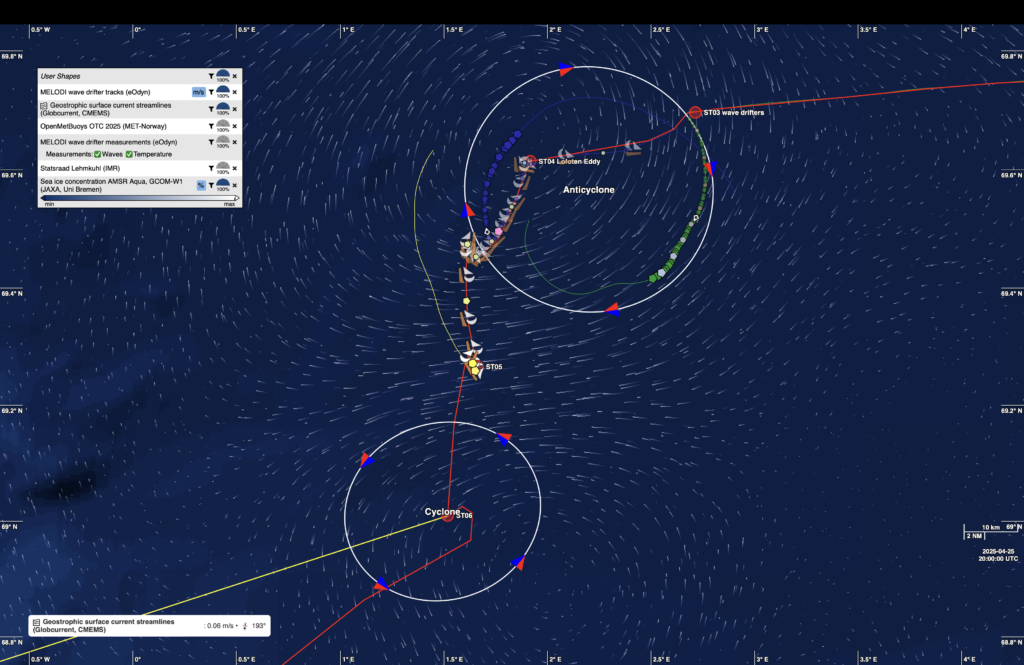
Lofoten Eddy. (Dr F. Collard –Ocean Data Lab)
It has taken the Statsraad Lehmkuhl nearly five days to reach the location of the Lofoten eddy system.
Dr Fabrice Collard from OceanDataLab, explained, “On 25 April 25, we made a station in the centre of the Lofoten Eddy where a very deep mixed layer was expected. This was confirmed by a conductivity, temperature and depth cast at 1200 m. The students deployed a BGC-Argo float on that day and it transmitted its first profile the following day. Wave drifter trajectories are confirming the presence of this large anticyclonic eddy.”
We have sailed through snow, hail, freezing temperatures, wind and waves to reach this location where one of our Ocean Training Course student, Lou Andrès, managed the deployment of a special Bio-Geo-Chemical (BGC) ARGO float.
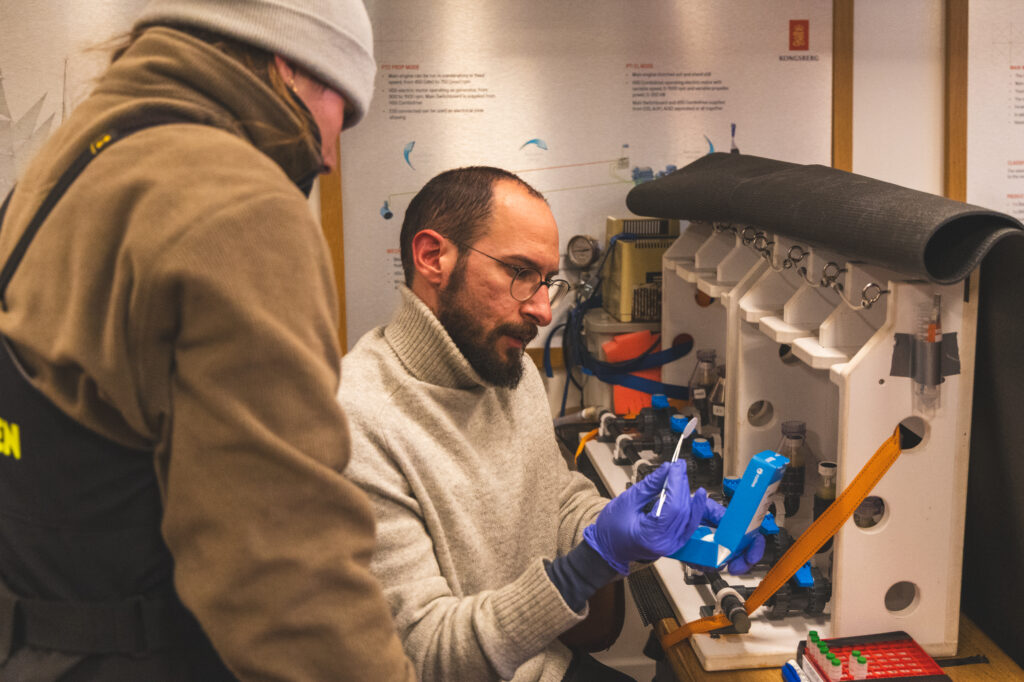
Theodorou Lason and Lou preparing some filtration before the deployment. (ESA/Ocean Media Lab)
It is a special moment and a milestone in the life, not only of Lou, but for all of us because this BGC-ARGO float is one of only a few to be deployed in support of the United Nations Ocean Conference (UNOC) to be held in Nice, June 2025.
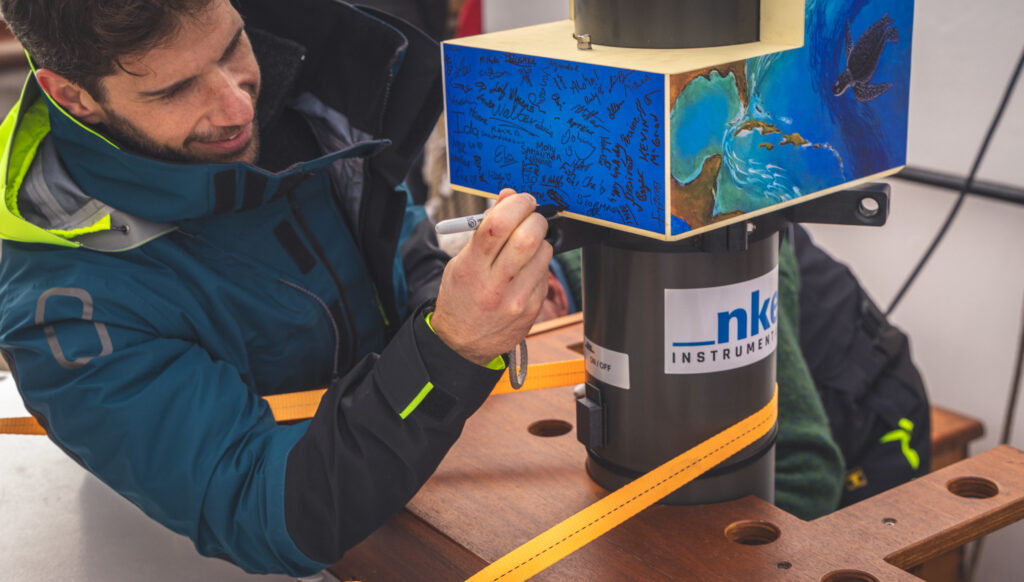
Signing the Argo float. (ESA/Ocean Media Lab)
It is a beautiful float with technology as advanced as that we use on our European Space Agency satellites in space. It is adorned with unique artwork from Costa Rica to set it apart for UNOC.
Everyone aboard the ship has signed ‘our’ float to wish it a long and prosperous life as it reports back vertical profiles of temperature, salinity and light parameters for the years to come. The excitement here is electric – and here is the wonderful and personal diary entry from Lou for today:
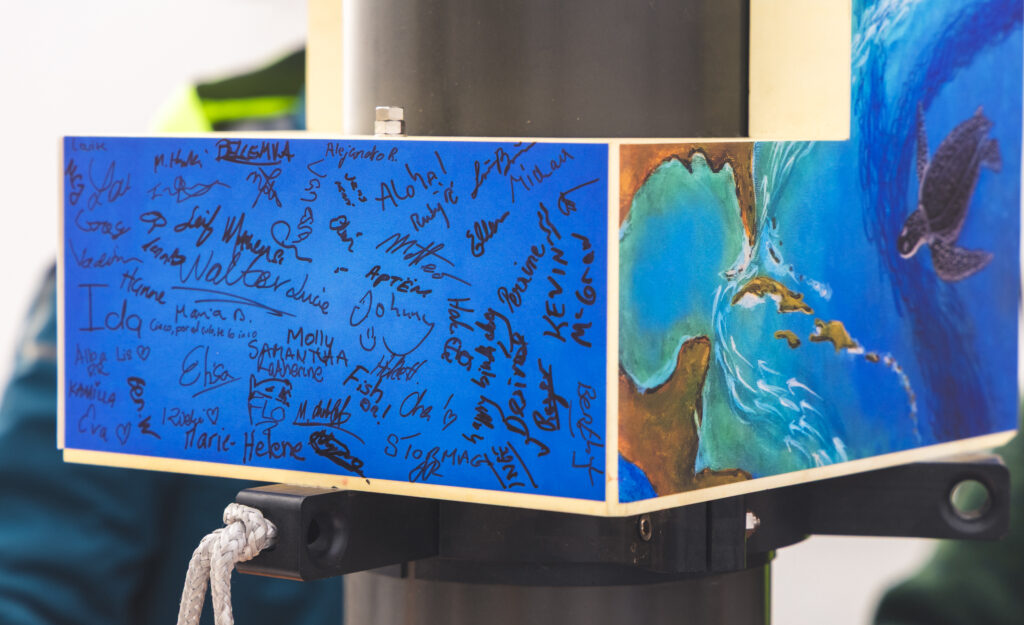
Signed Argo float. (ESA/Ocean Media Lab)

Lou Andrès. (ESA/Ocean Media Lab)
Today is a big day. We will deploy one of the two BGC-ARGO hyperspectral floats in the core of a massive anticyclone in the Lofoten Basin. It is really exciting as there is no float of this kind in this area yet. By putting it inside the eddy core, it should be trapped so that it stays around here.
We prepared everything yesterday with the precious help of other students and the crew. We discussed the strategy of deployment with the bosun and he decided to do it from the main yard! For sure, it would be a very special float deployment…
At 12:30, we are on station and the marathon starts here. As soon as I finished my ‘look out’ watch, I grab lunch and rush to the lab, looking at the conductivity, temperature and depth profile that is already going down.
Here, we need to choose the depths that we want to sample to analyse pigments and be able then to calibrate the float chlorophyll-a measurements. Thankfully, some folks gave me a hand with the water sample and filtration: I trained them for the first cast so they can be autonomous for the next ones. Thanks to them I was able to go back after finishing the preparation of the float.
After everyone on board had a chance to sign the float, the launch procedure began: everything checked. The float is starting to beep, which means that it is ready to go on a mission.
I guess I will remember forever the view of this float and its really nice painting flying in the air, attached to the main yard of this incredible sailing ship.
Despite some little fears, thanks to the really calm weather in addition to the crew being very helpful, the deployment went pretty well. Now, we are looking forward to the first profile, which should arrive tomorrow around noon! – Lou Andrès
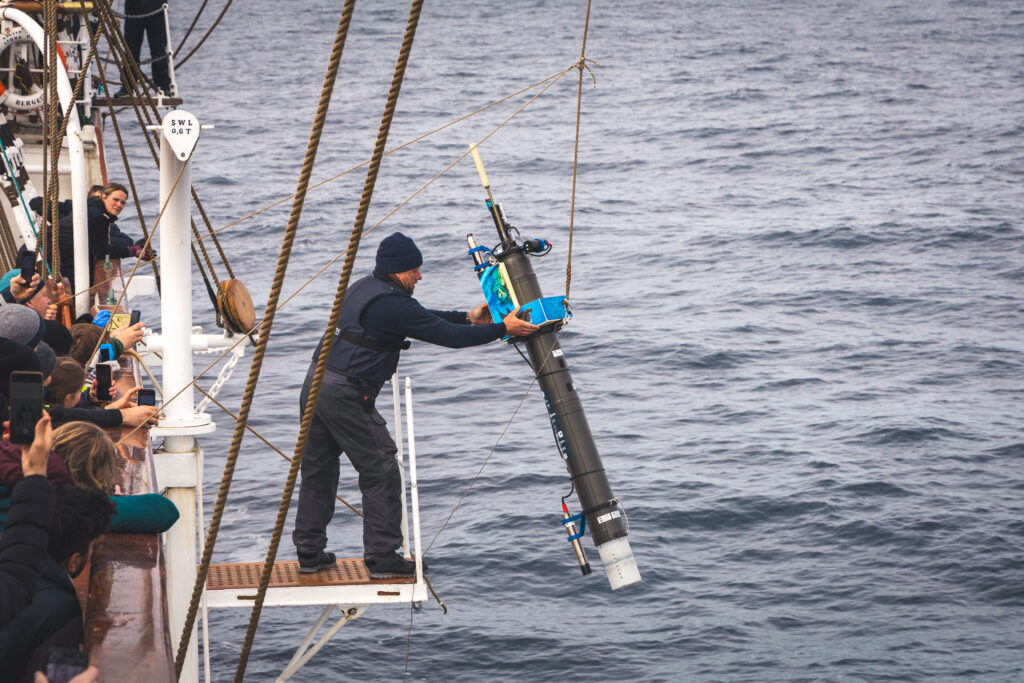
Deploying the float. (ESA/Ocean Media Lab)
Becoming an ambassador for ocean science is about achieving great things – and I am so happy that we can all be part of the wonderful achievement Lou Andrès and her team have made real today. All of us aboard the Statsraad Lehmkuhl now know personally the effort that it takes to maintain the ARGO profiling float array.
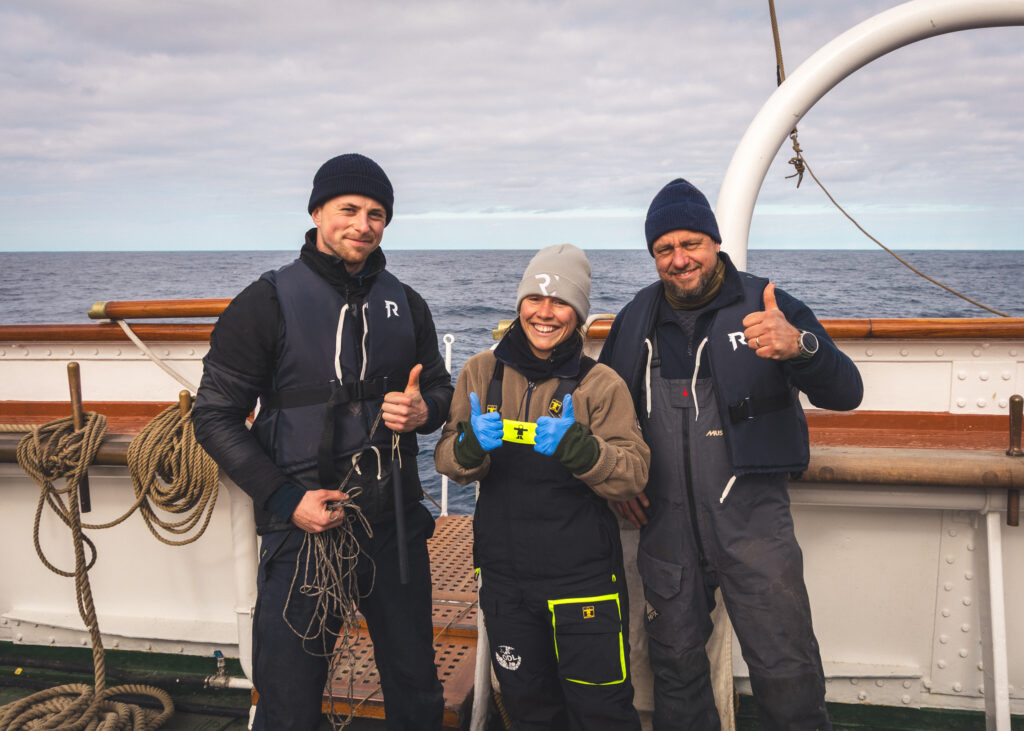
Job done. (ESA/Ocean Media Lab)
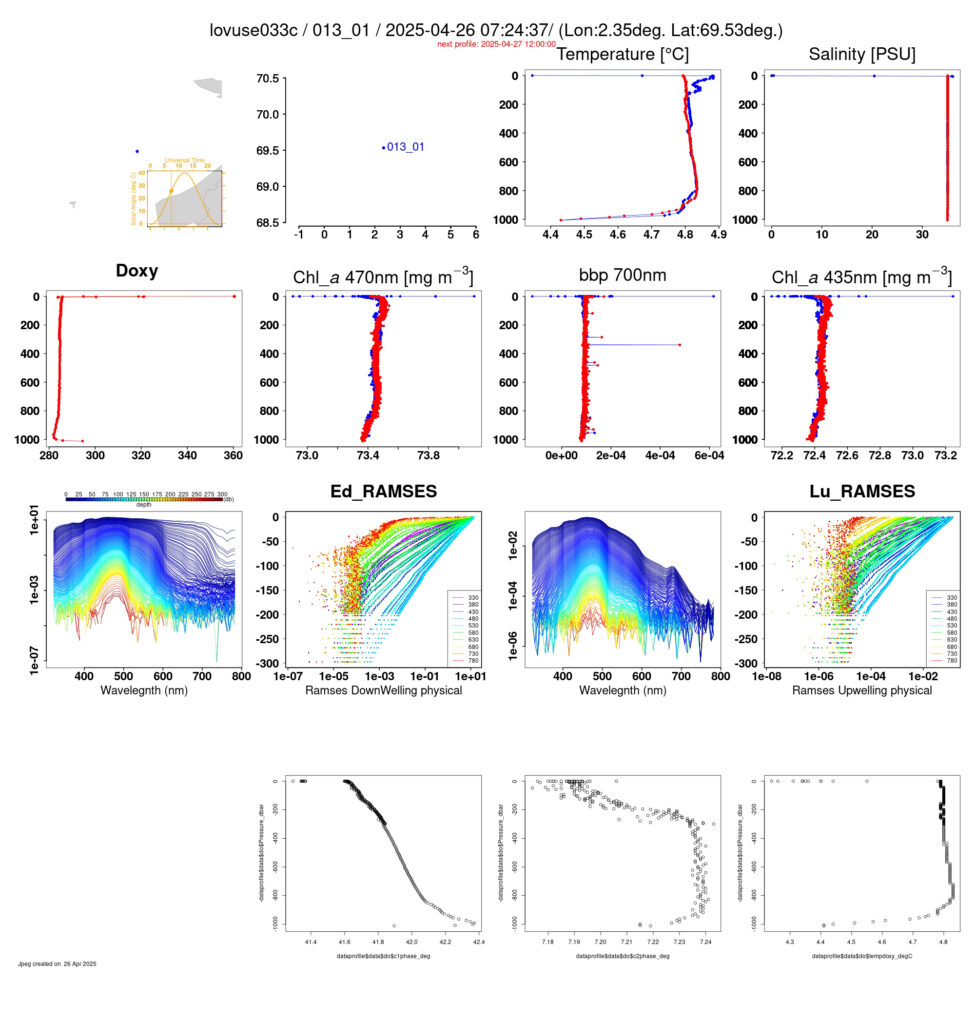
First profile received on 26 April, a day after the deployment. The wave drifters trajectories are confirming the presence of this large anticyclonic eddy. (ESA/Ocean Data Lab)
We have a new and deep respect for all our colleagues that maintain this essential observing system is support of a clean, healthy and sustainable One Ocean that connects us all. We will all follow this BGC-ARGO float with respect and affection in our daily work integrating satellite and in situ observing systems for climate action over the next few years.
Post from Craig Donlon (ESA)








Discussion: 2 comments
Deep respect ! and also supercool.
Inspiring Science! (Fun too!)